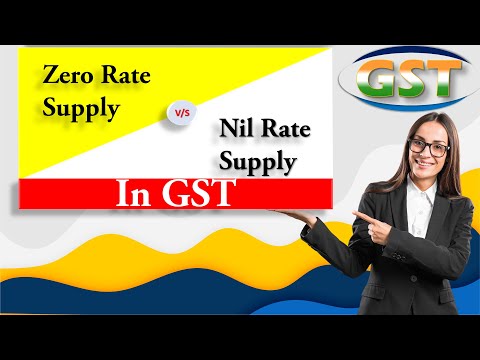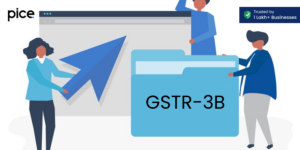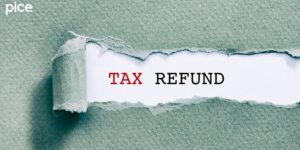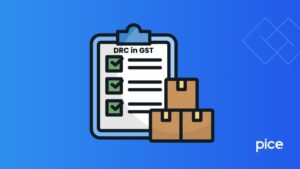Zero Rated or Nil Rated Supply in GSTR 1
- 18 Feb 25
- 9 mins

Zero Rated or Nil Rated Supply in GSTR 1
Key Takeaways
- Zero vs. Nil-Rated Supplies – Zero-rated applies to exports/SEZs with ITC benefits; nil-rated attracts 0% GST but no ITC.
- GSTR-1 Reporting – Report zero-rated in Table 7 and nil-rated in Table 6 with accurate details.
- Compliance & Documentation – Maintain invoices, approval letters, and export documents for smooth filing.
- Avoid Errors – Verify tax rates, invoice details, and supporting documents before submission.
- Stay Updated – Track GST rule changes or consult a GST expert for accurate filings.
When you are filing your GSTR-1 returns, one of the important things to consider is the zero-rated and nil-rated supplies. Nil rated supply in GSTR 1 implies that the good or service to which it applies will attract 0% GST.
People often make mistakes while filing their GST returns, and it includes the GSTR-1 returns. By reading this blog, you can equip yourself with the knowledge required to file your GSTR-1 returns. It will help you report your zero-rated and nil-rated supplies correctly.
Identification and Reporting of Nil or Zero-Rated Supplies In GSTR-1
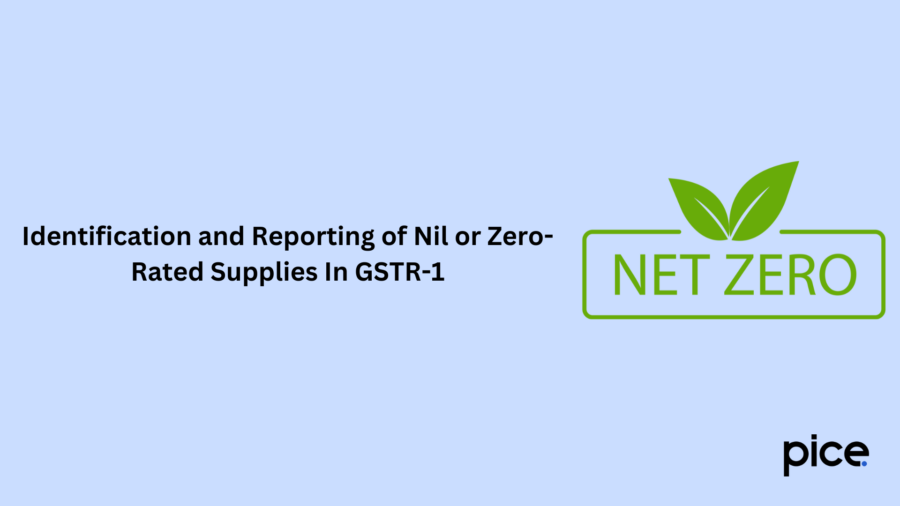
To report them in GSTR-1, it is essential to understand nil-rated supplies and zero-rated supplies:
Zero-Rated Supply
Under Section 16 of the IGST Act, a zero-rated supply can be a good, service or both which can be exported or supplied to a Special Economic Zone (SEZ). For example, it could cover outward supplies such as the export of a good to which IGST is applicable.
Throughout the entire supply chain of a zero-rated supply, no tax is applicable. Thus, no tax is paid by the producer while buying inputs for producing a product, nor is any tax paid for outward supplies.
It aims to make India’s exports competitive globally. The goal is not to burden exporters with taxes on top of the cost of exporting.
It is important to note that no prescribed list of goods or services is treated as zero-rated supplies. Under Section 16(3) of the GST Act, a person can claim a refund for a zero-rated supply in the following cases:
- A registered person may supply goods or services subject to a bond or letter of undertaking (LOU) with necessary conditions, without paying IGST. In this case, you can claim a refund of input tax credit (ITC) of central tax (CGST), state tax (SGST), union territory tax (UTGST), and IGST.
- A registered person may supply goods or services subject to necessary conditions and pay IGST. In this case, the person can claim a refund of the tax paid.
It is important to remember that under Section 16(2) of the GST Act, a person can claim a refund for a zero-rated supply even if the supply is non-taxable or classified as an exempt supply under GST. An exempt supply does not attract GST and you cannot claim ITC on it.
Nil-Rated Supply
Those goods or services to the supply of which 0% GST is applicable are called nil-rated supply in GSTR-1. Schedule I of the GST Act contains the list of nil-rated goods. Examples include fruits, vegetables, honey, salt, cereals, and milk.
ITC does not apply to input services used to produce nil-rated supplies. Thus, if you paid GST on such input services, you will not get a refund for it.
What Is the Difference Between Zero-Rated and Nil-Rated Supplies?
Here is a look at how zero-rated supplies compare with nil-rated supplies:
| Zero-Rated Supplies | Nil-Rated Supplies |
| These are exported or supplied to SEZs | Covers goods or services with 0% GST |
| You can claim a refund of the GST paid | It doesn’t attract GST |
| ITC can be claimed | ITC is not applicable |
What Is a Special Economic Zone?
You will have to learn about SEZs to understand zero-rated supplies.
A special economic zone is a region where the laws of business, trade and taxation are different from those of the rest of the country. The aim is to create favourable conditions for doing business and attracting investments.
Objectives of Special Economic Zones
Here are the key goals of creating SEZs:
- Attracting foreign investments
- Improving infrastructure facilities
- Job creation
- Promoting exports
Compliance Requirements for Nil and Zero-Rated Supplies
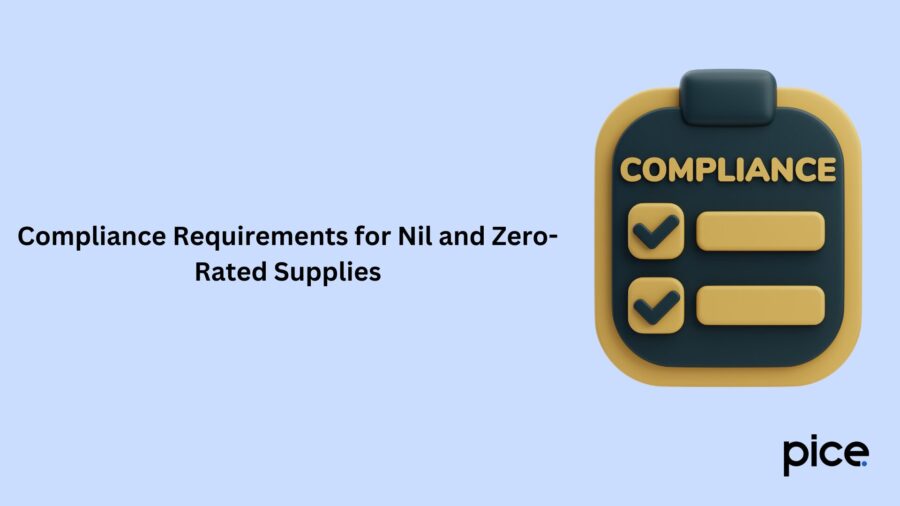
In this section, we will look at some of the important compliance requirements for nil and zero-rated supplies.
Compliance Requirements for GSTR-1 Filing Returns
Here are the compliance requirements for GSTR-1 return filing:
- You must file GSTR-1 returns timely to avoid any penalties.
- The zero-rated supplies must be mentioned in Table 7.
- You have to check that the rate of tax is 0%.
- Ensure that all the information you entered is correct. This information includes the tax amount, GSTN, invoice name and numbers.
Compliance Requirements for Input Tax Credit
Here are the compliance requirements for claiming input tax credit:
- You must have proper records to claim input tax credit on the tax paid for providing a good or service. Important information includes invoices and credit notes.
- Follow all the prescribed rules for claiming ITC.
Additional Compliance Requirements
Here are some additional compliance requirements you need to keep in mind:
- You must get the required approvals for zero-rated supplies, such as those needed from a SEZ.
- You must have a good accounting system to track all your zero-rated and nil-rated supplies.
- Provide all necessary documents and information. If you are asked for any additional information or documents, provide those as well.
- Keep track of GST rules as they can change with time.
Documentation Requirements for Nil and Zero-Rated Supplies
Here are some of the important documentation requirements for nil and zero-rated supplies:
- You must diligently record the invoices and purchase orders for all zero-rated and nil-rated outward supplies.
- Important export documents such as the bill of lading must be kept safely.
- Approval Letters and other important documents from the SEZ must be safely kept.
If you are unsure about the documents or information you need, you can consult a professional GST specialist.
Factors to Consider While Reporting Nil and Zero-Rated Supplies
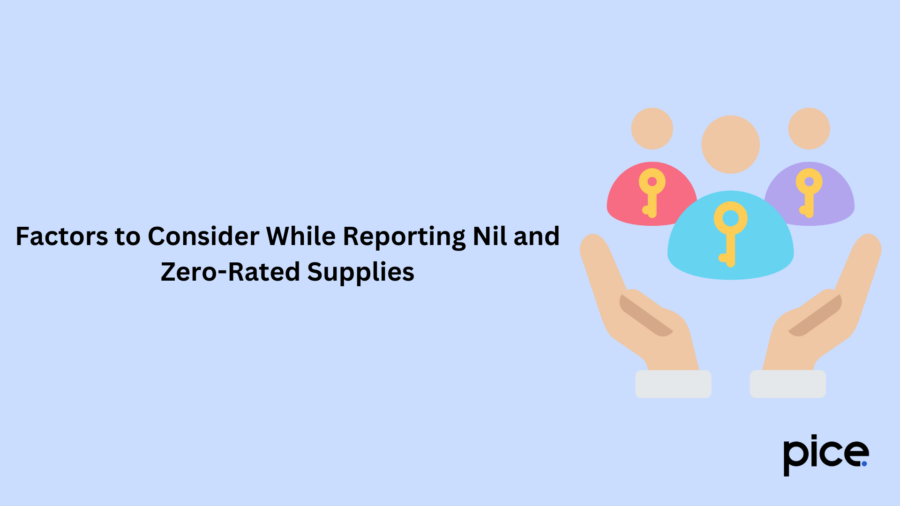
It is important to avoid any errors while filing the GSTR-1 returns. Here are some of the things to keep in mind while reporting nil or zero-rated supplies:
- Verify All Information Before Filing GSTR-1 Return: You must scrutinise all the invoices and documents you have to submit to report your nil and zero-rated supplies. Ensure that you create the correct invoice number and GSTIN while filing the returns. Across Table 6 and 7, ensure that you have properly categorised the nil and zero-rated supplies.
There should be consistency between the information in the returns and documents such as the invoices, approval letters etc. If there are any errors in the documents, correct them before filing the returns. - Check the Tax Rate: Check the GST rate applied to the zero-rated supplies and the unit of supplies. You have to ensure that the GST rate is 0% in both cases. Ensure that all the calculations are correct and no taxes are applied to them.
- Maintain Documents Properly: You must keep all important documents securely and be able to access them whenever required. Important documents include letters of approval and invoices.
- Hire Professional GST Assistance Service: Filing the GSTR-1 returns is a complicated task. If you feel confused while entering all the required information, and do not know which is the next step to pursue, you can always hire a professional consultant to help you. A GST specialist can help you file your returns accurately and prevent any errors.
- Stay Updated: GST rules are regularly updated. To ensure you are updated about all the important information, you must regularly track all the updates to GST rules. Since GST covers a broad range of human consumption, it is important to stay updated on rules for export supplies, taxable, and non-taxable supplies.
Conclusion
Filing GSTR-1 returns can look like a daunting task. You need to carefully document all your payments, purchases, and important documents such as letters of approval to file nil rated supply in GSTR 1. You have to carefully note your nil-rated and zero-rated supplies in Table 6 and 7. These returns cover overseas supplies and taxable supplies.
If you lack confidence, you can also seek expert assistance. In all cases, ensure that you do not make any mistakes while entering the information.
💡If you want to streamline your payment and make GST payments via credit card, consider using the PICE App. Explore the PICE App today and take your business to new heights.







